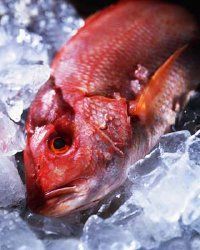
Although the term fibrocystic breast disease may sound ominous, it actually describes a benign condition of the breasts that more than 60 percent of all women experience. If your breasts feel lumpy, and you have intermittent breast discomfort, such as tenderness, swelling, and pain, you may have fibrocystic breast disease.
How can you tell? Symptoms include a dense, irregular, and bumpy consistency of the breast tissue. During a self-exam, you may feel a thick area of irregularly shaped tissue with a lumpy or ridge-like surface, or you may encounter a bead-like texture to your breast tissue. Fibrocystic breasts typically become swollen, tender, heavy, and lumpier a week or two before the menstrual period. There also may be changes in nipple sensation, and the nipples may itch. These symptoms can range from mild to severe, and they usually improve after menstruation. Some women, however, have persistent rather than intermittent symptoms. The condition tends to subside with menopause.
Advertisement
What's Behind the Pain...and What's Not
No one understands the causes of this condition, but some researchers believe that breast lumps are inherited. What we do know is that the condition is related to how the breast responds to hormonal changes during the monthly cycle. Hormonal stimulation causes milk glands and ducts to swell and the breast to retain water. The condition is more common in women aged 30 to 50, most likely because of years of repeated hormonal stimulation, which can harden lumps.
What's usually not behind the pain is breast cancer. Only five percent of fibrocystic conditions have the type of changes that would be considered a risk factor for developing breast cancer, according to the American Cancer Society. Unlike the lumps associated with fibrocystic breast disease, which are tender and move freely, cancerous lumps most often are not tender and don't move freely.
If you think you have fibrocystic breast disease, be sure to check it out with your physician, who should always examine any lump(s) in the breast. You'll be pleased to discover that breast tenderness and other symptoms can usually be managed through diet. Go to the next page for some home remedies you can use to ease the discomfort of fibrocystic breast disease.
There are many things you can do at home to monitor your health and ease the symptoms of various ailments and illnesses. Visit these links for more information.
- To see all of our home remedies and the conditions they treat, go to our main Home Remedies page
- Regular self-exams can help you spot the early warning signs for skin cancer, testicular cancer, and breast cancer. To learn more, visit How to Administer Self-Exams.
- Menstrual discomforts can be a monthly nuisance, but some home remedies can ease the discomfort. Learn more in Home Remedies for Menstrual Problems.
- PMS causes bloating, moodiness, and general discomfort for many woman. Learn how to use home remedies to ease those symptoms in Home Remedies for Premenstrual Syndrome.
This information is solely for informational purposes. IT IS NOT INTENDED TO PROVIDE MEDICAL ADVICE. Neither the Editors of Consumer Guide (R), Publications International, Ltd., the author nor publisher take responsibility for any possible consequences from any treatment, procedure, exercise, dietary modification, action or application of medication which results from reading or following the information contained in this information. The publication of this information does not constitute the practice of medicine, and this information does not replace the advice of your physician or other health care provider. Before undertaking any course of treatment, the reader must seek the advice of their physician or other health care provider.
Advertisement

